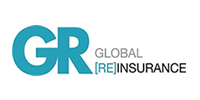The latest global economic and insurance outlook report in Swiss Re’s Sigma report series warns of ‘shifting sands’ in the market landscape
Global non-life insurance premium growth is predicted to be just 1.7% in 2026 – compared to 3.8% in 2025.
This prediction comes as the market reaches a cyclical low and hard market tendencies make way for competitive conditions, although recovery in 2027 and beyond is forecast despite ‘shifting sands’ in underlying global economic conditions.

That is according to the latest global economic and insurance market outlook report in (re)insurer Swiss Re’s Sigma report series, published 19 November 2025, which also predicted the insurance sector would see a robust 10.5% return on equity across 2026 despite the slowdown in growth.
The report also stressed that insurers would be affected by wider economic factors, such as “elevated and volatile” inflation, which would reduce consumer spending propensity, erode premiums and reserves and contribute to rising claims costs.
In contrast, Swiss Re identified several structural drivers that would contribute to premium growth over the medium term, including major commercial lines opportunities such as natural catastrophe exposure, re-industrialising countries and liability cover related to artificial intelligence (AI) usage.
In terms of personal lines, the UK saw largely unchanged premiums-per-policy in home insurance in the latest year-on-year comparisons, while motor policies saw a 10% fall in premiums-per-policy amid high customer turnover.
Medium-term boost
Talking at the report launch event, Jerome Jean Haegeli, group chief economist at Swiss Re, explained that one trend stood above all others in its potential to boost medium-term insurance chain value, though bringing with it clear risks – AI adoption.
Read: Aviva Q3 trading update predicts 2026 targets to be hit one year early
Read: Broker profitability rises as growth slows
Explore more financial articles here, or discover other news analysis content here
Haegeli said: “There has never been a technology with such a high rate of adoption as AI. I think there’s going to be a real impact on the economy, though there are clearly economic downside risks.
“It’s really interesting to see that distribution is the number one use case [of AI], where 55% of P&C firms use it. You also see it more and more in underwriting, operations and claims.
“When you think about AI and the insurance company value chain, yes there are upsides, but there are also downsides.”

He graduated in 2017 from the University of Manchester with a degree in Geology. He spent the first part of his career working in consulting and tech, spending time at Citibank as a data analyst, before working as an analytics engineer with clients in the retail, technology, manufacturing and financial services sectors.View full Profile
Hosted by comedian and actor Tom Allen, 34 Gold, 23 Silver and 22 Bronze awards were handed out across an amazing 34 categories recognising brilliance and innovation right across the breadth of UK general insurance.























































No comments yet